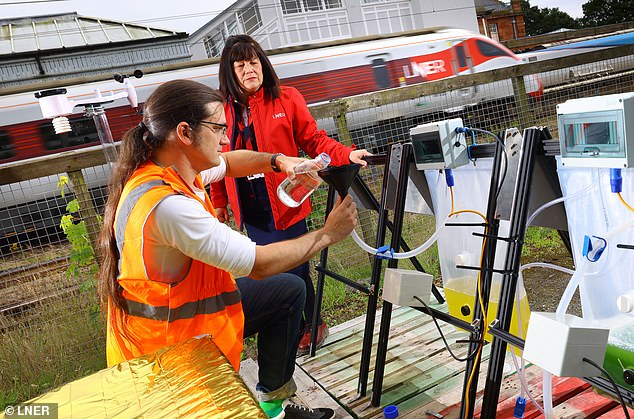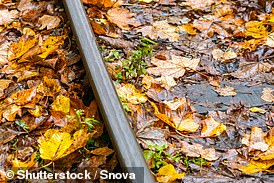Slime on the line! Railway company LNER reveals plans to grow ALGAE on the side of its tracks to curb carbon emissions
>
- LNER plans to place microalgae bioreactors along its train tracks
- Algae are very effective at absorbing carbon dioxide (CO2).
“Papers on the line” is the phrase that most rail passengers dread to hear.
But what about the algae on the line?
London North Eastern Railway (LNER) has revealed bizarre plans to grow microalgae on the side of train tracks.
The travel giant says the algae will capture carbon dioxide (CO2), helping in its efforts to reduce carbon emissions.
“We strongly believe that technology holds the key to discovering new ways to reduce our impact on the planet,” said Danny Gonzalez, Chief Digital and Innovation Officer at LNER.
London North Eastern Railway (LNER) has revealed bizarre plans to grow microalgae on the side of train tracks

Although algae is not pretty to look at, it is very effective at absorbing carbon dioxide (CO2).
according to Our world is in dataNational railways currently emit about 35 grams of carbon dioxide per kilometre.
This is much lower than the impact of driving (170 grams per kilometre) or flying (246 grams per kilometre).
However, LNER says there is always more to achieve, and is now taking extraordinary measures to reduce its footprint.
Although algae is not pretty to look at, it is very effective at absorbing carbon dioxide.
“Algae have an enormous ability to remove carbon dioxide,” said Rafael Goffin, a biologist at Woods Hole Oceanographic Institution. Sustainable brands.
“It absorbs as much carbon as all the plants and trees on Earth combined.
“Algae are inherently more efficient carbon removal machines than terrestrial plants because they do not expend biological resources on building a supporting infrastructure of stems, roots and branches – their entire surface area is dedicated to photosynthesis.”
LNER collaborated with technology startup Algacraft on the pilot project.
An initial five-month trial tested the feasibility of using microalgae bioreactors to capture carbon around train stations.
This proved successful, with the microalgae successfully grown outdoors in the UK climate.
Now, LNER is ramping things up with a second phase of testing.

An initial five-month trial tested the feasibility of using microalgae bioreactors to capture carbon around train stations
The bioreactors are being set up on derelict land next to the railway line at Berwick-upon-Tweed station.
Each bioreactor occupies approximately the same amount of land as two parking spaces, making the space adjacent to the tracks “an ideal choice,” according to LNER.
“A key pillar of LNER’s broader innovation strategy is to implement and trial new projects at early stages, driving them forward and rapidly advancing our knowledge of how they work within the rail industry environment,” Mr Gonzalez added.
“As we reach this first milestone, we look forward to developing our research further with Algacraft and sharing what we have learned more widely with the rail sector and beyond.”
After the second phase of testing, LNER will work with Algacraft to improve the system and determine how to roll it out further.
The timeline and cost of the project remain unclear. MailOnline has contacted LNER for further information.
(tags for translation) Daily Mail

